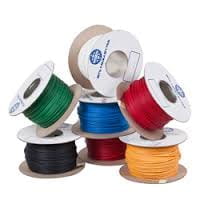The plastic printing material most frequently used in the 3space classroom is PLA (polylactic acid), which is a bioplastic derived from natural materials like potatoes, tapioca, and corn. So with a plastic derived from things we eat normally, you would think it would be safe to eat and drink out of 3D printed items, right? A team of scientists in 1995 tested PLA under various conditions to see if that was truly the case.
They tested PLA with different common ingredients found in food and liquids such as ethanol (found in liquor) and acetic acid (found in vinegar). The team also tested the material under different temperatures and durations of time to cover all different types of storage. The scientists found that “PLA is Generally Recognized as Safe (GRAS) when used in contact with food.” The study did reveal that PLA does release a small amount of lactic acid, however lactic acid is a common food ingredient and there was not enough to cause harm to humans.
While PLA is safe to use for food and liquids, an article on reprage.com warns that many of the hot ends used for 3D printers may release materials that are not food safe. Using a stainless steel hot end is one way to prevent this problem. Also, most PLA is colored. The coloring in the PLA contains additives that are not safe for contact with food. It is possible to use “virgin” or “natural” PLA without color that would eliminate this risk. Finally, an unavoidable risk with PLA and other 3D printing materials is that when printed, objects contain cracks and holes that food can easily get stuck in and mold.
PLA may be safe for simple things like water or a one-time-use food dish, but repetitive use may lead to health issues and would not be an ideal option for kitchenware. 3D printing is evolving every day and there is a possibility that in the future a plastic material may be available. For now, printing mugs and dishes in PLA is not the safest option.
For more information check out this article from RepRage.




Recent Comments